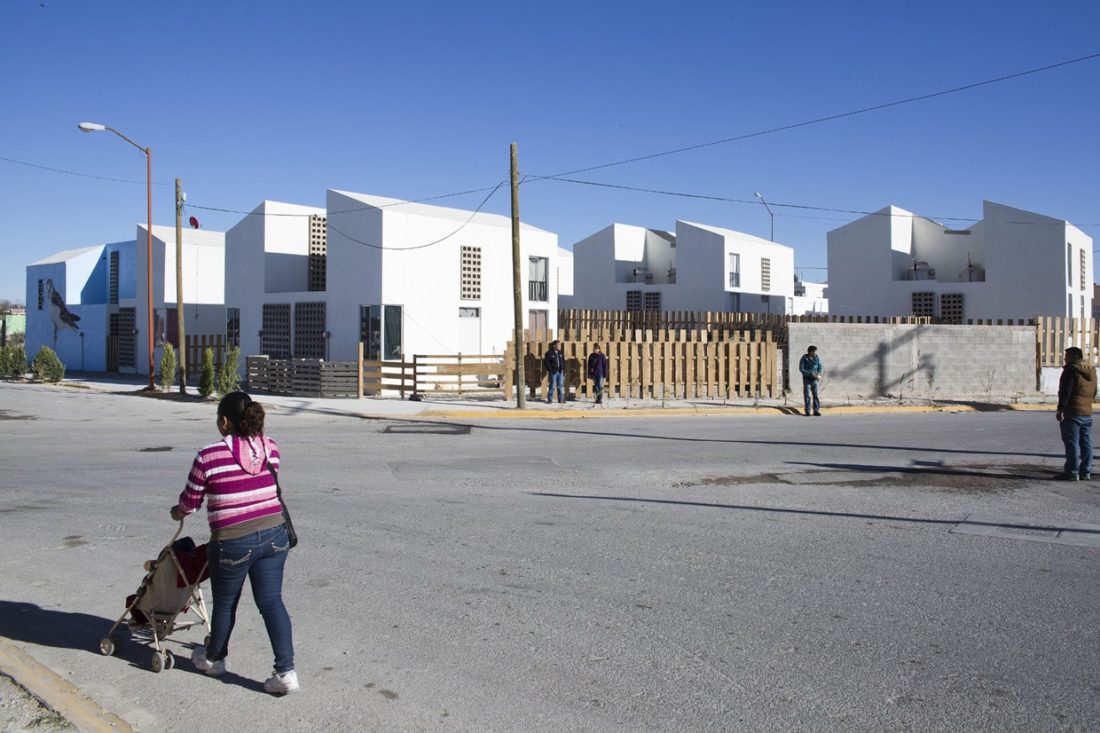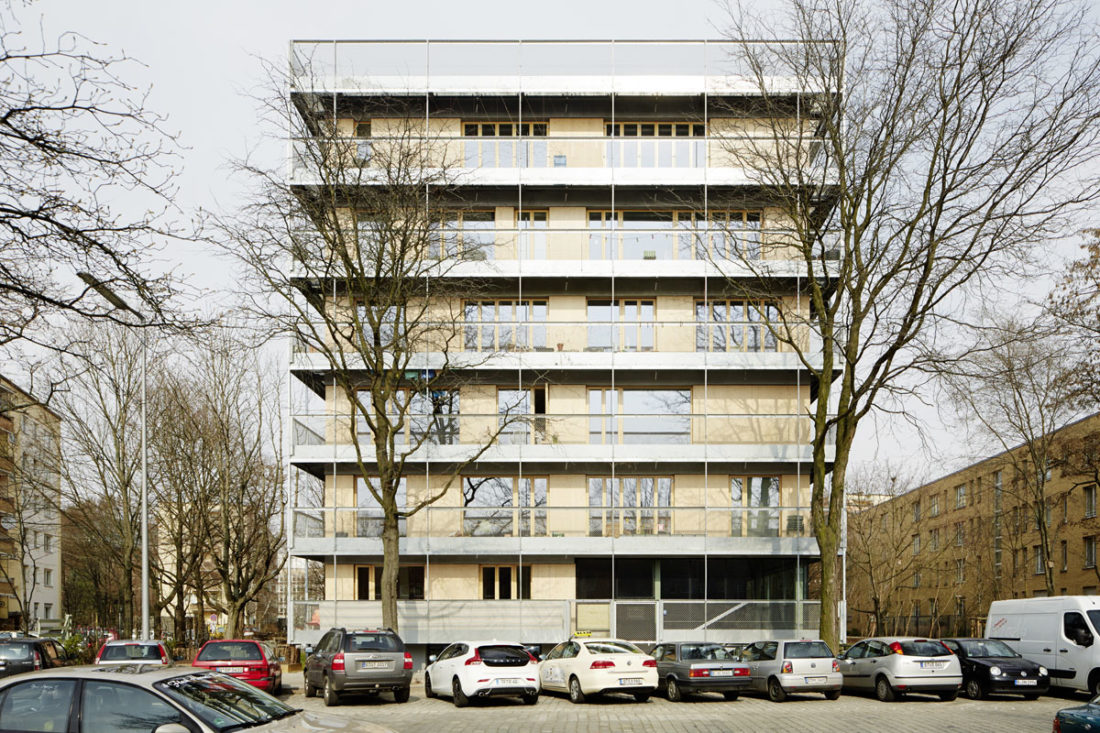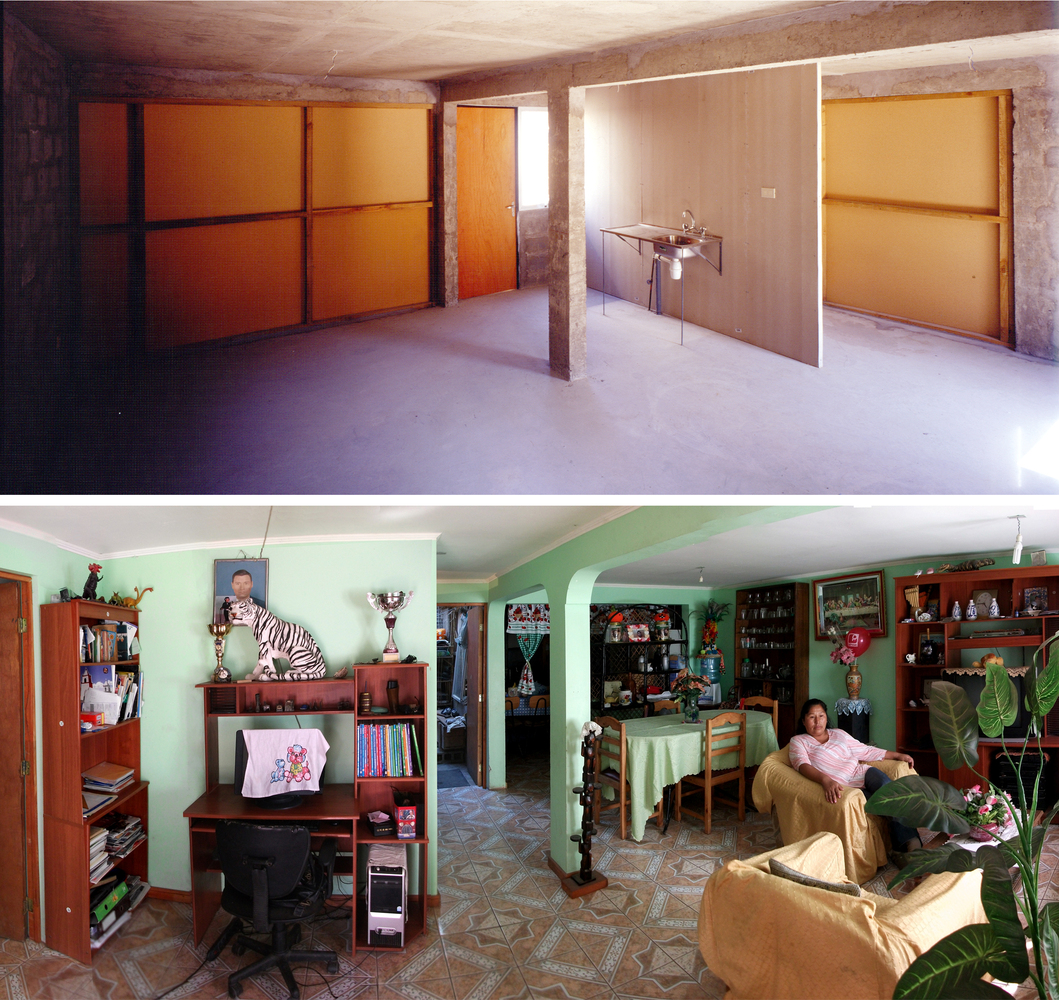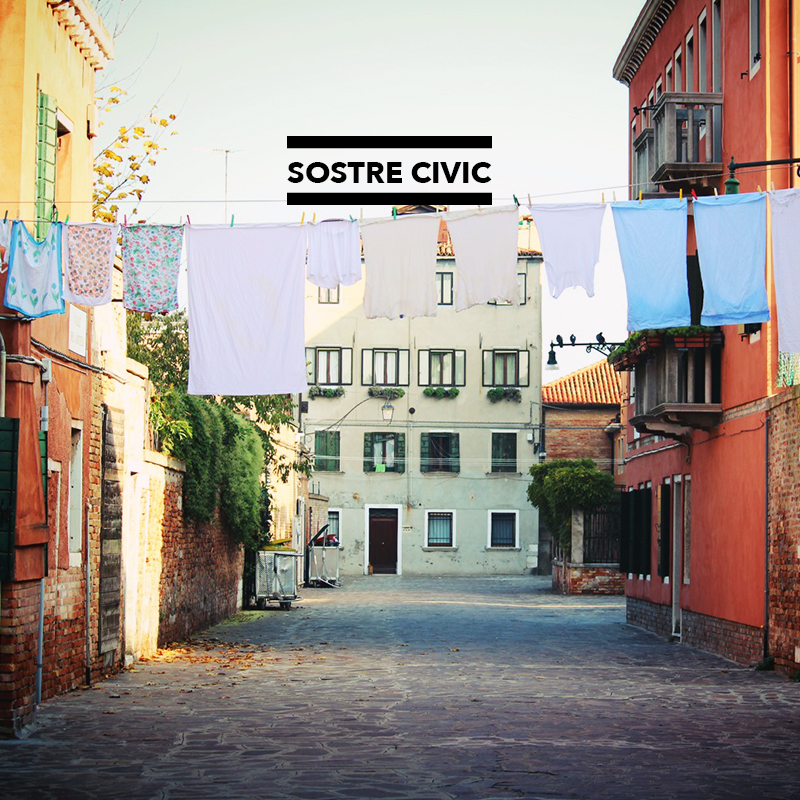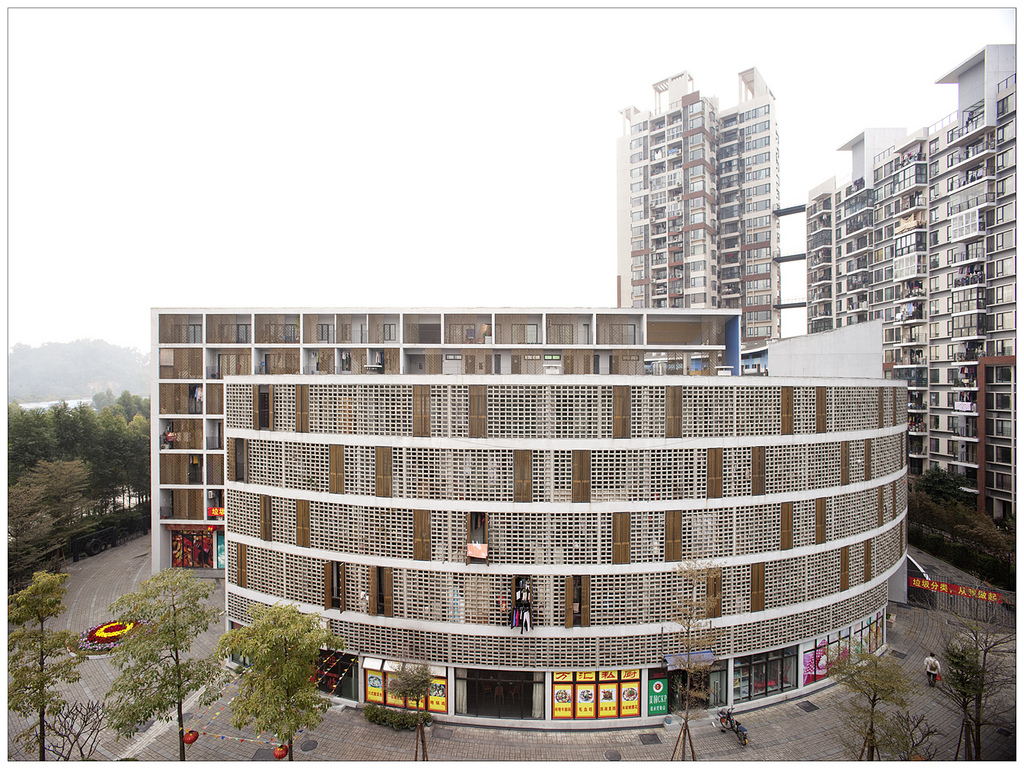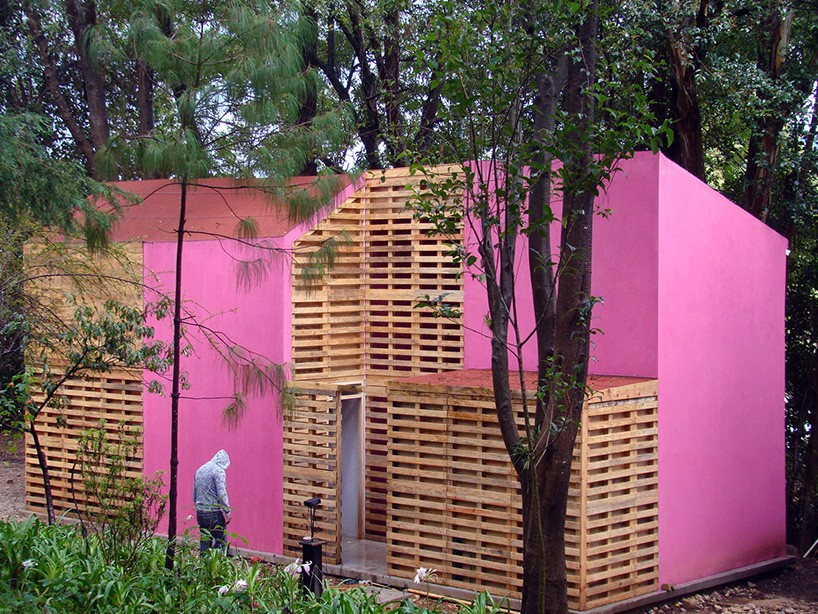Existenzminimum reloaded: strategies to achieve Affordability in contemporary urban housing
by Sara Brysch
Meeting ENHR working group ‘Comparative Housing Policy: New approaches to affordable housing’ November 2016, Faculty of Architecture, Delft University of Technology, Delft
Abstract
Providing affordable housing has become a challenge, since the number of European households financially incapable of affording their homes has increased. Generally, affordability in housing is determined only from the financial point of view.
It is, indeed, a financial matter: a large share of the tenants’ income is used in the house: to pay the rent and housing expenses, such as maintenance and the energy spending. But what if Architecture is capable of reducing this income’s share? To what extent can innovative architectural strategies help to achieve affordability, in short and long terms?
I intend to defend in this paper the hypothesis that the revival of the concept of Existenzminimum – transferred to the minimum subsistence dwelling – could mean a viable and perhaps ideal solution for affordable housing in contemporary urban centres, if it integrate the following key concepts: (1) minimum quality standards, (2) community value, (3) participation, (4) innovative financial systems.
It is my belief that the architecture which embodies these components fosters the sense of community, allowing a substantial reduction of costs; and should be evaluated under the perspective of globalization and sustainability, not only in the mere planning of social programs but rather in a multidisciplinary approach.
1. Introduction
Existenzminimum, in its definition, means the “subsistence minimum” required to guarantee the material needs for a human being to survive (food, clothing, medical care and housing) and his minimal participation in the society.
This concept – translated into the minimum subsistence dwelling – was developed between the two World Wars as a need to rationalize and rebuild a destroyed Europe, and as the result of social transformation. Here, affordability in housing was possible, as a result of tireless debates, studies, experiments and definition of minimum standards by a group of architects, who wished to find a way to provide the basic minimum of space, air, light and heat, indispensable to men, so that they could perform their vital functions inside the house unit: a modus vivendi minimum (minimum way of living) rather than a modus non moriendi (not dying way of living).
One cause that contributes to housing unaffordability is the demographic shift that the world is currently witnessing: the increase of population on the one hand (the relation between the demand and supply of dwellings is unbalanced) and the reduced number of people per dwelling on the other hand (which leads inevitably to ‘overhousing’). In short, one big problem of affordability in housing in dense urban centres is actually the space itself, so the discipline of Architecture should be creative enough to integrate this concept in smart and updated design solutions adequate to the current society and cities.
Costs could be lowered by defining and understanding the needs of the target group of residents; by guaranteeing the minimum quality conditions; by fostering and reviving the participation of the inhabitants in the design and construction process; by developing community-based systems, through the introduction of shared spaces (such as common laundries, community kitchens and common living-rooms, terraces), as a side effect that could boost a higher social commitment between neighbours.
All these components should be integrated in a flexible growth housing system, together with a flexible rental structure, both capable to be reconfigured, as a family’s needs change with time. The understanding that architecture should not be considered a ’finished product’ is essential for the success of housing affordability.
Architecture, together with governmental authorities and social sciences, should come up with innovative housing systems, in order to create social value. Affordable housing cannot be considered an isolated economic issue; it must be inserted into a wide spectrum of social, cultural, spatial components, in order to be fully understood and investigated. Social changes create new family structures: the typical family (father-mother-children), which characterized the entire 20th century and “constituted the economic reference and dominant policy, is now a minority”. (Ascher, 2010) It is, therefore, urgent to undergo a critical review on the fundamental necessities and priorities of the contemporary citizen; to stimulate the discussion of the change of permanence values; as well as a re-equation of the levels of privacy and ownership. In the design sphere, the architect should focus on the spatial evaluation of the housing units, regarding the ‘liveability’ of the applied standards, the benefits of the choice of typology, its circulation system, functional distribution and spatial adaptations.
Salama (2006) defends a trans-disciplinary approach in the study of affordable housing, as well as the contemplation of a new paradigm of thinking: “In the old paradigm, the value of affordable housing is assumed to be in the quantifiable attributes of dwellings and their related cost, while in the new paradigm affordable housing inquiry can be viewed within relationships between the process, the product and the socio-cultural aspects of the targeted populations”. (Salama, 2006)
The following topics correspond to the aforementioned key concepts, intrinsically connected as a web, to create effective planning strategies in order to reach possible solutions on affordable housing.
2. Minimum quality standards
Ernst May and Bruno Taut, the state architects with their Siedlungen projects in Frankfurt and Berlin; Margarete Schütte-Lihotzky, with the development of the concept of “Frankfurt kitchen”; Alexander Klein, with his research and creation of minimum standards, were some of the protagonists of an era when the housing issue gained importance in its construction and discussion, as evidenced in the Congrès Internationaux d’Architecture Moderne held in Frankfurt in 1929 entitled “Wohnung für das Existenzminimum” (“The minimum subsistence dwelling”).
The issue of minimum housing was not merely based on surface, composition and rents, but rather on a new way of living. For this to be possible, it was crucial that rationality would be not only applied to design and construction, but also to the behaviour/lifestyle of the residents in these new housing units.
But, in the course of time, the concept of minimum housing has undergone a paradigmatic shift: the idea of a patronizing state architect who, together with the elite of architects, defines the ideal home for the modern man, has been gradually replaced by a participatory one, with community-based housing systems and environmentally responsible solutions. Contemporary architects build more and more with rather than for their clients, as the subsequent examples may prove. It is important to take into account this change of paradigm in the analysis of the evolution and the new significance of the concept of Existenziminimum, to ultimately explore its current viability in the affordable housing planning.
The International Symposium held in Berlin in December 2011 “Min to Max” on the redefinition of Existenzminimum, stressed the necessity of bringing back the concept in order to develop new and inexpensive typologies, in a time where Europe, although very different from the one in the beginning of the 20th century, is again suffering or recovering from a serious economic crisis. The panels of the conference confirmed the shift of the societal perception of the concept, where the minimal standards are not just targeted to the individual dwelling, but where housing is rather an opportunity for the participation of the community in the city fabric. Spaces for the collective, Self-construction and social empowerment and Building on the existing were the discussed topics by architects and representatives of cooperative projects.
3. Community value
Within the aforementioned scenario, contemporary concepts experienced in Europe such as co-housing or co-working, even the digital open source, are evidence of recent attempts to transform our world into a community and a more committed socially platform, being an example of that the experience of Baugruppen in Germany, the cooperative La Borda in Barcelona or the participatory initiative Los Madriles in Madrid.
In the private domain, there are several proposals that explore the potential of minimum spaces associated with common spaces in very densified cities, in an attempt to adapt to new models of family and to a itinerant youth: the Bentobox built in Berlin – a conversion of an old building, Barcelona and eventually in Milan (project in which I have been involved), a collective minimum housing with community kitchen, roof terrace and garden, which only work in a rental basis system, or the B53 building in Vienna. Also Tulou Housing, in Guangzhou, China, designed in 2008 by Urbanus Architects and commissioned by a real estate private company, is considered a successful affordable housing prototype. A 220-minimum-dwelling complex, targeted for low-income families, it is a reinterpretation of the vernacular housing typology ‘Hakka’, round earthen structures with a central courtyard, anchored in a community-based system. Some requirements to enhance the sense of community were set up, such as the fact that the residents were not allowed to have a car.
Stepping back again in time to the beginning of the 20th century, several were the architectural efforts to achieve affordability though community-based housing systems, such as the soviet dom-kommuna, created after the Russian Revolution of 1917. It was also the first time a metric standard reference for the design of housing – the Stroikom – was applied. The purpose of these architectural solutions was to develop a type that could express the socialist society that was emerging: a strategy based on absolute concepts, used later by the Modernist Movement, leading both to its failure. It was considered a utopian socialist idea, as it was not well received by the residents – the working class – who aspired to have their own individual space.
Ginzburg, a Soviet constructivist architect, defended a more refined and sensitive attitude of the architect, who should not impose, but rather propose an architectural solution to the future inhabitant, since it was a building in which the occupants would have to live collectively. Spaces should be carefully designed, in order to turn the transition from private to public spaces a natural and suggestive action, and to allow the change of configuration of the compartments, depending on the needs and desires of the inhabitants. (Frampton, 1981) And typologically speaking, he concluded that the gallery, organizing the 30-50sq. m. minimum units, was the most practical and social solution, since the outside gallery would function as a spontaneous meeting place. (Mumford, 2002)
4. Participation
Participation is another facilitator on affordable housing processes. Widely developed in the 1970’s in Latin America, participatory processes were promoted by governmental social housing programs, which invited the future resident families to take part of the design and even construction of their houses. In the present days, this concept was rediscovered and updated by the Chilean architect Alejandro Aravena and his Do Tank firm Elemental, through innovative affordable housing projects with a great social impact.
The projects were based on a clever financial decision: the state subsidy should cover the price of the land, the infrastructure and the architecture – so the strategy was to invest in quality and deliver half of a good house, instead of a bad complete house. The idea is that Architecture cannot be considered an absolute, finished and untouchable product, but rather an incremental and progressive process.
The Mexican architect Tatiana Bilbao recently developed an affordable housing model – La vivienda popular. Planned to be self-built (by the owners) with recycled and cheap materials and to be adaptable to every specific climate, this project is the result of a large research on the target group, through several questionnaires and interviews to the future inhabitants.
Europe is facing a crisis of affordable housing, which calls for the necessity of seeking and supporting new, alternative and cost effective solutions, collaborative strategies, based on self-financed models, such as the co-housing complexes, where the participation of all the stakeholders is also a key element in the whole conceptual process.
The aforementioned German Baugruppe (building group) is a group of people, usually including an architect, who aim to use their financial resources in the construction of a collective housing building, at a reasonable price and according to their preferences. Baugruppe integrates the participation of the future residents in the different parts on the planning process. “Since the nineties, we’ve got a new generation of cooperatives that emphasize the idea of a community, participation and affordability.” said Michael LaFond, architect co-founder of Co-housing Berlin. It has been a successful strategy for housing policies in many German cities, over the last decade.
La Borda is an example of co-housing in Barcelona, Spain and an indicator that the concept is leaving its northern routes and expanding to Mediterranean countries, as a way to tackle the lack of affordable housing in city centres. The project, planned to be ready in 2018, is based on the combination of small individual units with shared communal and common spaces, including co-working spaces, and all the design decisions are made by the group of the future tenants, who collectively own the property.
These contemporary collective housing models create an alternative scenario of the housing market. One of the purposes of the development of co-housing projects is the idea of long-term affordability and economic stability, since they do not depend neither on landlords nor the risk of rent variations. They represent a reaction to obsolete policy systems and to traditional housing markets, but they are still punctual interventions within the European housing spectrum. A more embracing platform, joining together city-states, architects, urbanists and the community, must be created and be putted into action, in order to develop creative housing policies and new investment strategies.
5. Innovative financial systems
In Berlin, the typical problem encountered by the cooperatives is to find access to land; in the case of Barcelona’s project La Borda the most challenging issue was to find the best financial model to build the project. In the end, the solution was provided by a cooperative bank for social projects called the Coop57, which contributed to 20% of the general budget and promoted a ‘micro lending campaign’, something between a loan and a crowdfunding platform. It is estimated that the rents will be about 50% lower than the traditional market, also due to a special agreement made with the municipality, which allowed the co- operative to pay low prices for the rent of the land and since it is ‘public land’, the project is set by the terms of social housing prices.
The R50 Baugruppe is a recent collectively funded project built in Berlin, with a financial strategy developed by a group of architects together with the community, to ensure a sustainable housing construction model out of the traditional market system. Affordability was also prospective because of the general decision to accept that the final product would be delivered as ‘unfinished’, i.e. flexible for eventual adaptations. Through specific programs offered by Nürnberg’s UmweltBank, together with the project manager, it was possible to structure “a package of financing by pooling the individual mortgages for the units of future residents that would fund all the phases of construction.” (Bridge, 2015) In general, the price of a Baugruppe apartment is up to 25% lower than the price of a comparable new home financed by a developer.
Traditional real estate developer-driven housing markets are basically guided by speculation and the investment always envisions maximal short-term profit. In the described co-housing examples, the real estate developer is left out of the process; the investment is based on the community interests, with no intention to make profit out of the final product. Even in the situations where one can sell the house in the future, usually it has to be at the exact same price as it was originally purchased.
6. Conclusion
Are these revolutionary housing and financial solutions strong enough to shake the current system and counteract the neo feudal market, where instead of owning their own property families must live dependent on the property of others and where “individuals’ public lives have become more and more ruled by business corporations?
Homeownership frameworks, leasehold rights, relations between developers and residents are changing. And new models for housing based on unorthodox financial models are emerging, as an immediate solution for the current profit-driven housing market and the inefficiency or even inactivity of the city governmental policies. Municipalities must be urgently called to provide a renewed housing policy structure and to create favourable conditions to self-initiatives that provoke an added value to the city and the community, instead of selling the properties and the land to the highest bidder.
Some past concepts and solutions created in times of crisis, such as the general notion of minimum, must be revisited and adjusted to the current situation. A comparative research covering different countries is crucial, since the definition of Existenzminimum is always culturally specific. It must be studied as a relative concept and not an absolute one, since it depends on historical, cultural, political (policy and legal frameworks) and economical circumstances. Something that the modernist utopia of creating a man-type for a house-type did not contemplate.
It is also mandatory to challenge the purpose of the architectural practice in the definition of affordability in housing and draw the attention to the role of the architect and his relation with the community, in a more demanding and damaged world, which highlights even more the actual pertinence of the theme.
References
ASCHER, François (2010). Novos Princípios do Urbanismo – Novos Compromissos Urbanos Um léxico. Lisboa: Livros HorizonteBOUMEESTER, Harry and HAFFNER, Marietta (2014). Housing affordability in the Netherlands: the impact of rent and energy costs. Journal of Housing and the Built Environment. Edit: SpringerBRIDGER, Jessica (2015). “Don’t call it a Commune” in: Metropolis Magazine
CIAM II (ed.) (1930). Die Wohnung fur das Existenzminimum. Stuttgart: Julius Hoffmann Verlag
DJALALI, Amir (2011). ““Digital Neofeudalism:” Notes on Mario Carpo’s The Alphabet and the Algorithm” in: The City as a Project.
FRAMPTON, Kenneth (1981). História critica de la arquitectura moderna, Barcelona: Editorial Gustavo Gili, S.A.
HALL, Eduard (1986). A dimensão oculta, Relógio D’Água Editores
HAFFNER, Marietta and HEYLEN, Kristof (2012). A ratio or budget benchmark for comparing affordability across countries? Edit: SpringerKOPEC, Marek and others (2015). BAUGRUPPE! Handbook. Prague: Prague Institute of Planning and Development MAY, Ernst (1929). “Die Wohnung für das Existenzminimum”; in: Das Neue Frankfurt – Monatsschrift fur die Probleme moderner Gestaltung/3. Jahrg. 1929
MONTANER, Josep Maria (2015). La arquitectura de la vivienda colectiva – Políticas y proyectos en la ciudad contemporánea. Barcelona: Editorial Reverté
MUMFORD, Eric (2002). The CIAM Discourse on Urbanism, 1928-1960. Massachusetts: MIT Press
RING, Kristien (2013). Selfmade City. Self-initiated Urban Living and Architectural Interventions. Berlin: Senatsverwaltung für Stadtentwicklung und Umwelt Berlin und Jovis Verlag GmbH
SALAMA, A. M. (2006). A life style theories approach for affordable housing research in Saudi Arabia. Emirates Journal for Engineering Research
https:// citiesintransition.eu/interview/co-housing-3-the-case-of-berlin (visited on 10 October 2016)
https://citiesintransition.eu/interview/co-housing-in-europe-1-la-borda-barcelona (visited on 10 October 2016)
http://www.min2max.org/ (visited on 5 October 2016)
http://www.businessinsider.com/500-million-debt-serfs-the-european-union-is-a-neo-feudal-kleptocracy-2011-7 (visited on 14 October 2016)


